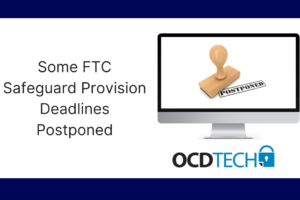Penetration testing is important for finding weaknesses in systems. However, the real benefit comes from clearly explaining the results in a report.
For IT administrators, a good penetration testing report template is not just a task to complete. It is an important tool for making smart decisions, meeting compliance requirements, and enhancing your overall security plan.
If the report is hard to understand, too detailed, or lacks important information, the next steps may not be clear. This means some risks might not be dealt with.
A clear and organized report helps you identify and address weaknesses before they turn into problems.
Why Penetration Testing Reports Matter
Turning Test Results Into Actionable Improvements
Raw data from a pentest is rarely digestible on its own. A good report bridges the gap, transforming technical findings into a clear path forward. It shows you not just what’s broken, but also why it matters and how to fix it. When done right, the report becomes a security asset in itself, a reference point for future patching, configuration changes, and planning.
Meeting Compliance Without Scrambling
If your organization works under standards like HIPAA, PCI-DSS, NIST, or SOC 2, you’re already familiar with the documentation demands. A thorough penetration testing report doesn’t just keep auditors happy, it saves you from a last-minute fire drill. Having your test results aligned to compliance frameworks upfront shows that you take security seriously and have a repeatable process in place.
Speaking Everyone’s Language, From Tech Teams to Execs
One of the most underrated aspects of a pentest report? Its role in communication. It needs to resonate with multiple audiences. Engineers want technical depth. Executives want to know what’s at risk, how it affects the business, and how soon it can be fixed.
A well-crafted report can walk that line, offering both clarity and substance. It’s not just about dumping technical jargon but telling the story of your security posture in a way that drives action from the right people.
Sections within the Penetration Testing Report
Executive Summary Reports
Think of this as the “TL;DR” for leadership. It zooms out and highlights major risks, potential impacts, and suggested next steps, all in a way that avoids technical overload. It’s about giving decision-makers just enough detail to act, without sending them into a CVSS score rabbit hole.
Detailed Technical Reports
This is where your security and IT teams live. These reports go deep into the weeds: vulnerabilities, exploit paths, tool output, screenshots, and everything they need to reproduce and resolve each issue. It’s the go-to document for patching and hardening systems post-assessment.
Incident Reports
Used in red team or adversary emulation exercises, these summarize simulated breach paths and how detection and response systems performed.
Compliance Reports
Mapped directly to security standards, these reports help demonstrate adherence and identify gaps in compliance.
Key Components of a Pentest Report
Cover Page
Includes project name, date, scope, and author information.
Table of Contents
For easy navigation, especially in lengthy technical reports.
Executive Summary
Summarizes objectives, scope, high-level findings, business impact, and overall risk rating.
Methodology Overview
Outlines the testing approach (black-box, white-box, gray-box), tools used, and threat models.
Findings Section
The heart of the report. Each finding should include:
- Vulnerability name
- Description
- Severity rating (CVSS or custom scale)
- Evidence
- Impact
- Recommendations
Remediation Recommendations
One thing that sets a great report apart? Recommendations that are actually useful. It’s not enough to say “patch this” or “upgrade that.”
The report should offer guidance that’s actionable and realistic within your environment. Whether you’re dealing with an on-prem network, a hybrid setup, or a fully cloud-native stack, the recommendations should match your reality.
At OCD Tech, our pentest reports are tailored with that in mind. We don’t just list problems, we outline what to do next, when to do it, and what to prioritize based on your risk level and resources.
Appendices
Include glossary, tool output, screenshots, and scope details.
Best Practices for Writing a Pen Test Report
Clarity and Conciseness
Avoid unnecessary jargon. Even the most technical sections should be digestible.
Use of Visuals
Screenshots, attack diagrams, and charts can communicate better than text alone, especially in executive summaries.
Adherence to Format
Consistency helps stakeholders compare across reports and identify patterns. Use standard headers and severity ratings.
Customization Tips
No two organizations are the same. Customize your report template to reflect your network architecture, security policies, and audience expectations.
Sample Penetration Testing Report Template
Formatting Guidelines
When creating or evaluating a penetration testing report template, make sure it includes:
- Clear section headings
- Unified color and font scheme
- Editable fields for specific client or system details
Example of a Sample Pentest Report
A solid sample pentest report might look like this:
- Cover: Internal Network Pentest Report – Q2 2025
- Executive Summary: “Critical vulnerabilities in file-sharing services may expose sensitive client data…”
- Findings:
- Vulnerability: SMBv1 Enabled
- Severity: High
- Exploitability: Demonstrated via Metasploit
- Recommendation: Disable SMBv1, upgrade to SMBv3
Want to see how this looks in action? Contact us to ask for a walkthrough of our custom pentest report template. It is designed to be clear, meet compliance standards, and provide technical details.
Future of Penetration Testing Reporting
The future of pentest reporting is more interactive, more visual, and more integrated with remediation workflows. Think dashboards instead of static PDFs, and real-time updates instead of quarterly reports.
As attack surfaces grow, so does the need for actionable, well-structured reporting. Whether you’re defending legacy systems or migrating to the cloud, your penetration testing report is your strongest ally in proactive defense.




